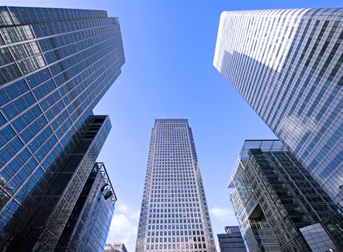Weekly Brief

Interest rates still going nowhere
7 minute readGBP
Although at times it felt as though sterling was going out of its way to trip itself up, the pound came out of the week an average of just 0.2% lower against the major currencies. On Thursday, the GBP actually shared the lead for the day with the NOK and NZD. The snags came with relentless regularity. First was Downing Street’s clumsy and short-lived attempt to circumvent its own self-isolation guidance. Then came Freedom Day, raising fears of an acceleration in infections. On Wednesday, the government made a new set of demands for the EU to amend the oven-ready Brexit treaty in Britain’s favour, an idea which Brussels flatly rejected.
On the other side of that coin was a generally helpful set of UK economic data. Rightmove saw house prices 0.7% higher on the month and up by an annual 5.7%. UK public sector borrowing in June was just over £22 billion, higher on the month but less than expected. Monetary Policy Committee member Jonathan Haskel gave a speech in which he expressed optimism that the UK economy might not be permanently scarred by the pandemic. He also said, however, that “for now, tight [monetary] policy is not the right policy”.
EUR
Although it is not yet August, Europe feels very demob-happy ahead of the traditional holiday month for politicians and captains of industry. The only notably high-profile event was the European Central Bank’s rate announcement and subsequent press conference on Thursday. It had been eagerly anticipated because it would reveal the first fruits of the ECB’s recently-completed strategic policy review. As ever, investors’ expectations were on the ambitious side, especially with regard to the bank’s modernised “forward guidance”. The ECB simplified its policy statement, and the bottom line, as expected, was that interest rates will not go up until inflation is sustainably at 2%.
There was nothing remarkable to see among the Eurozone economic statistics. Inflation slowed to 1.9%, exactly as forecast. As a result of lockdown distortions, German producer prices increased by 1.3% in July and were 8.5% higher on the year. The Federal Statistical Office said it was “the highest increase compared to the corresponding month of the preceding year since January 1982 (+8.9%), when prices rose strongly during the second oil crisis”.
USD
It was not a particularly smooth rise for the dollar, which rattled back and forth across a one-cent range against the euro. It was, however, a modestly successful one. The USD did fractionally better than the second-placed CAD, strengthening by an average of 0.4%. It took four fifths of a cent off sterling. Except for an unexpected dip in the (provisional) Michigan index of consumer confidence, the US ecostats were mostly constructive. Retail sales rose 0.6% in June, having been forecast to fall 0.4%.
The most controversial report concerned the US economy, where the recession is officially over. What’s more, it ended last May after only two months. Although the traditional definition of a recession is two successive quarters of negative GDP growth, America has a “National Bureau of Economic Research Business Cycle Dating Committee” to rule on the matter. In its opinion, the recession is long gone, but investors are not convinced. One reason for their scepticism is that US payrolls are still down at the level of early 2017, 6.7 million below their pre-pandemic high.
CAD
A couple of conspicuous jumps and drops for the Loonie had no obvious macroeconomic cause. It looked as though somebody was taking the currency for a walk in a quiet market, hoping to profit from the moves. In the end, the Loonie’s net change against its main benchmark, the Greenback, was close to zero. It strengthened by an average of 0.3% against the majors and added a cent against sterling.
Investors were not overburdened with Canadian ecostats. May’s 0.5% rise in wholesale sales was smaller than the forecast 1.1% increase. Three sets of housing data confirmed a still-buoyant residential property market. Teranet reported “a record 12-month rise of home prices in June” with the index 16% higher than a year earlier. Housing starts slowed slightly in June but were still well into the upper ranges of the last 15 years. The “official” new housing price index showed house price growth slowing for a second month, though “the year-over-year gains remained near record highs (+11.9%) in June”.
AUD
It was a bit of a struggle for the Aussie, which found itself stuck at or near the rear of the major currency bunch. In the end it did cement last place for the week, with an average loss of 0.5%. The seven days cost it two thirds of a US cent and it was down by a proportionally-smaller two thirds of an Australian cent against sterling. The main non-statistical factors were Covid and the Reserve Bank of Australia. With Covid, the AUD is suffering from what some say is the government’s poor management of Covid. As for the RBA, the minutes of its last monetary policy meeting suggest that there will be no upward move for interest rates before 2024.
The only “hard” ecostat from Australia was for retail sales in June. They were down by a monthly 1.8%, more than three times the expected decline. NAB’s Quarterly Business Survey found Australian business conditions rising “strongly” in Q2, with the index 12 points higher at a record 32. Business confidence eased slightly, from 19 to 17. This Friday’s provisional purchasing managers’ index readings were disappointing, with services and the composite reading falling to 14-month lows in the sub-50 c0ntrraction zone.
NZD
The Kiwi had a better time of it than the Australian dollar but even so delivered a sub-par performance. It lost an average of 0.3% to the major currencies and gave up half a cent to the US dollar. The NZD lost a fifth of a cent to sterling, having taken last place on Monday and first place on Thursday.
There was little for investors to take away from the two sets of NZ economic data. Credit card spending in June was 6.3% higher on the year. The increase was a little more than forecast and only briefly positive for the Kiwi. Business NZ’s performance of services index was of greater interest: At 58.6 it was not the highest ever but it represented a fourth consecutive month of expansion and was not a mile short of April’s 61.1 record. The author of the report observed that “combined, the PSI and PMI signal a hefty rate of growth in economic activity – in the realm of a 4% annual rate of growth in GDP. At one level, this is very encouraging. At another, it suggests the economy is running headlong into even-worse capacity constraint, and, with it, serious inflation pressure”.


